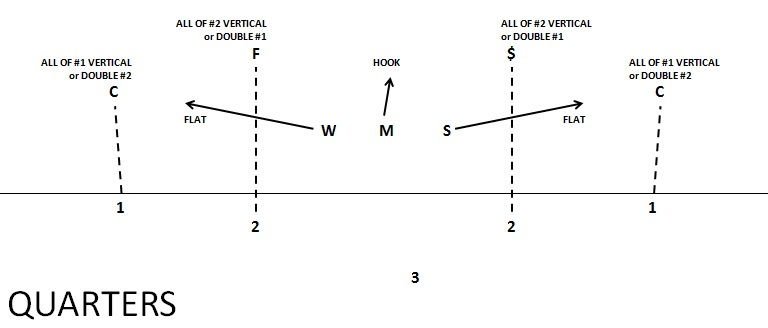The number 16 play in our countdown to determine the best plays of Tennessee’s 2015 season is Brian Randolph’s interception against Alabama.
One of the best defensive plays of the season came early in the second quarter of the Tennessee Volunteers’ matchup with the Alabama Crimson Tide. Alabama was driving down the field in a 7-7 game, and on a key third down, Vols safety Brian Randolph ended the drive with a great interception.
The Vols were running a combination coverage called Cover Six. To put it simply, Cover Six means that the defense will be playing Quarters (aka Cover Four) to one side of the field, and Cover Two to the opposite side.
Here’s a quick rundown on Quarters from an article on Vols’ defensive coordinator Bob Shoop’s scheme.
“The corners will align about five to seven yards off the ball. The corners will lock on to the number one receiver (closest receiver to the sideline on each side of the field) on any vertical routes. As long as the number one receiver releases vertically, the corner will carry his route. Should the receiver release on an underneath route, the corner pass him off to a linebacker. The corner must move his eyes to the number two receiver (the second receiver from the sideline) and help the safety by bracketing any vertical route.
“The safety will align slightly deeper than the corners at about a nine to twelve yard depth. They will make a similar read on the number two receiver. If the number two receiver releases vertically, the safety will carry the route. If he releases underneath or outside, the safety will become a robber. He will eye the number one receiver and give the corner inside help.
“The two outside linebackers are responsible for covering the flats in pure zone coverage. The inside linebacker will cover the hook zone over the middle. He must wall off any crossing routes. These underneath zones are where the defense is most vulnerable, but even that is by design. The defense aims to use the zone to keep everything in front and avoid giving up the big play.
“The reads of the defensive backs turn quarters into a coverage that is adaptable to any route concept. This is why quarters is so popular. It is not a static, spot-dropping zone, but rather a read-and-react coverage. It can be molded on the fly to defend any formation and any route concept an offense could conceivably run.”
Cover Two, on the other hand is a pure zone coverage with two deep defenders (the safeties) and five underneath defenders (corners and linebackers).
When you combine those two coverages together, you get Cover Six. This is a common adjustment for defensive coordinators who want to give the offense a different look to each side of the field.
On this play against Alabama, the coverage scheme looked like this.
One of the weaknesses of Cover Two comes in the area in between the corner and the safety. If a receiver is running a vertical route and recognizes Cover Two, many coaches teach him to throttle down in that open space between the two defenders so the quarterback can get him the ball.
Jake Coker, Alabama ‘s quarterback, recognized the Cover Two look from the start and knew he was going to try to hit his receiver on a fade route. He saw the corner, Cam Sutton, squat on the flat route, and thought he could fit the ball in to his receiver.
Coker was wrong. Randolph broke on the ball from his deep safety position and made a diving interception right in front of the receiver.
This was a fantastic catch by Randolph, and an even better job to recognize what Alabama was doing and break on the ball. His pick ended the Crimson Tide’s drive and helped Tennessee swing field position back in its favor.
You can read previous installments of this series by clicking below:
Play #35 - Evan Berry’s Pick Six
Play #34 - Preston Williams’ First Touchdown
Play #33 - LaDarrell McNeil’s Comeback
Play #32 - Malik Foreman’s Interception
Play #31 - Josh Dobbs and the Sweep
Play #29 - Alvin Kamara’s First Touchdown
Play #28 - Jalen Hurd’s Big Hit
Play #22 - Darrin Kirkland Jr.’s Interception
Play #21 - Von Pearson’s Double Move
Play #20 - Cam Sutton’s Career Long Punt Return
Play #19 - Evan Berry’s First Kickoff Return Touchdown

